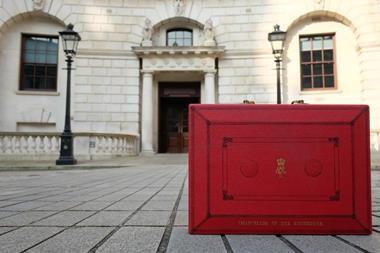As 2015 draws to a close, Kerstin Kühn takes a look at what the biggest trends of the coming year are likely to be from across the Pond – from food delivery to the debate over tips, the phasing out of artificial ingredients and the rise of the humble vegetable
Online food delivery
New York-based food and restaurant consultancy Baum + Whiteman’s latest report on the hottest food and beverage trends for the coming year insists that “the two most noteworthy trends in for 2016 have nothing to do with food”.
The firm predicts that the biggest disrupter to the industry will be food delivery: “Aimed at the ultimate consumer convenience, food brought quickly to homes, offices and (why not?) hotel guests, delivery affects everyone from McDonald’s to your favourite white tablecloth emporium. Smartphone users, latching on to the ease of locating a restaurant, ordering, paying, and getting loyalty points without ever speaking to a human being, are driving this revolution.”
Baum + Whiteman identifies a number of major players, who are muscling into the world of high-speed food delivery: Google, uberEats, Amazon Prime Now, Postmates, Grub Hub, Yelp. “None actually makes food; they’re middlemen connecting restaurants and customers, collecting fees and personal information about who orders what, when and from which restaurants – valuable additions to what they already know about you,” the company says.
It adds that some operators such as Panera Bread, Starbucks, Domino’s and Chipotle are developing food hubs, delivery-only outlets and second assembly lines to handle deliveries without distracting its regular shops. “Most fast-casual outfits, initially designed for consumer involvement in the assembly process, will have to wrestle with this delivery challenge,” Baum + Whiteman maintains.
No tipping
“Danny Meyer’s recent announcement that all Union Square Hospitality Group restaurants will be “hospitality included” is a game-changer,” says San Francisco-based consultancy Andrew Freeman & Co. Indeed Meyer’s move has highlighted the inevitable change the industry will have to face up to when it comes to America’s deeply ingrained tipping culture.
What the debate is really about is creating an employee-centred ethos and one that recognises how the front and back of house together create the service experience. With so many regulations about who may share in gratuities, doing away with the system altogether completely changes employee incentives.
“In truth, the restaurant industry’s amazing growth during the past five decades has depended on artificially low prices that are based upon underpaid labour,” insists Baum + Whiteman. “In the fast-food business, low labour costs are subsidised by taxes on the general public to pay for employees’ food stamps and other supplementary welfare payments. In fancy restaurants, your $36 (£23.76) main course could easily have been made by a $10 (£6.60) an hour cook sweating in an overheated kitchen.”
Local governments are passing “living wage” laws, lifting minimum wages, sometimes abolishing tip credits, all raising labour costs for operators, while State and Federal governments, grasping for every penny, make accounting for tips, benefits and meals increasingly complex and costly – all of which is forcing operators to think more clearly about giving everyone an hourly wage.
Free-from frenzy
Mintel has declared artificial ingredients as “Public Enemy No. 1”. According to one of its recent studies, Free-from Food Trends, 43% of consumers agree that free-from foods are healthier than foods without a free-from claim. Additionally, another 59% agree with the statement that the fewer ingredients a product has, the healthier it is.
In line with these findings, a number of the big fast-food players have committed to ridding their menus of artificial ingredients. Chipotle is purging genetically modified ingredients; Panera Bread is axing 150 artificial colours, flavours, sweeteners and preservatives; McDonald’s and Chick-fil-A are working towards ridding their chickens of antibiotics; Pizza Hut will remove artificial flavours and colours from some pizzas; Taco Bell aims to remove all artificial flavours and colours; and Shake Shack’s buns are going GMO-free.
Baum + Whiteman points to “clean menus” and the ‘healthification’ of fast and fast-casual food as a major trend for 2016, while Freeman & Co insists that restaurants that say no to GMO and other ingredients not immediately recognisable to guests and thereby gain consumers’ trust, already have an edge over the competition.
Sustainability
While cleaning up their menus will be imperative for operators in 2016, it won’t be enough, according to Baum + Whiteman. “Consumers are searching for more holistic initiatives from restaurants: control of waste, water conservation, humane treatment of animals (and employees), and a host of other eco-social issues,” the firm adds. “Restaurant companies should be stitching together narratives about their overall eco-stewardship.”
Meanwhile chefs surveyed by the National Restaurants Association (NRA) ranked hyper local sourcing and environmental sustainability among the top five culinary themes for 2016. And Mintel says that eco-consciousness is now simply a reality: “In 2016, sustainability evolves from being good for the bottom line to being a necessary new product development consideration for the common good.”
Freeman & Co points to restaurants curtailing waste, and using stems and cores that used to be thrown away. Calling the trend “discarded to delicious” Freeman & Co says: “With higher food and labour costs impacting restaurateurs, there’s a growing need to figure out how to save money. Add to that process, the move toward creating less waste, and you will find that chefs are embracing and utilising the bits and pieces of all sorts of ingredients that were previously discarded to create delicious new dishes.”
The rise of vegetables
Baum + Whiteman adds that “we’ve reached a tipping point for vegetables”, thanks to “relentlessly rising beef prices, horror over hormones, health-and-diet concerns, growth of farmers markets, locavore drummers and increasing numbers of flexitarians”.
In its report, the company adds that because vegetables are more seasonal than animals, they create menu excitement for restaurants that recognise that buying seasonally reduces food costs and keeps menus fresh.
Freeman & Co, meanwhile, pronounces vegetables as the hero of the coming year.
“They’ve become the centre of the plate component, not simply a side dish,” the firm says. “People want less animal protein and are requesting that veggies are ramped up to their fullest creative potential. Dedicated menus and menu items are an absolute must since guests are identifying themselves as vegan, vegetarian, and gluten-free more than ever.”
Five food trends for 2016
Poke
This Hawaiian dish of raw fish, soy sauce, sesame oil and seeds, as well as spring onion and seaweed is already a staple on menus in Los Angeles, but both Freeman & Co and Baum + Whiteman see it going mainstream in 2016.
Spicy condiments
Freeman & Co says the “now-ubiquitous Sriracha” is an indicator of how wide-spread spicy food is, while Baum + Whiteman and chefs surveyed by the NRA point to the growing number of ethnic condiments and spices.
Sliders
Sliders continue to lend themselves to more than just mini burgers these days and due to their small size, they’re perfect for restaurants to experiment with. “For bar menus and beyond, sliders satisfy,” says Freeman & Co.
Big brunch
Breakfast and brunch will go full-throttle in the coming year. Decadent French toast, indulgent egg dishes, and luxury ingredients like foie gras, caviar or lobster – it’s what’s on over-the-top breakfast/brunch menus.
Fried chicken
Celebrity chefs including David Chang (Momofuku) and Thomas Keller (The French Laundry) have joined a growing list of operators offering this staple, as well as Danny Meyer’s Shake Shack. It’s the next big thing in 2016.
Five beverage trends for 2016
New wave white wine
White wine, particularly moderately oaked will continue to rise. Sauvignon Blanc and Pinot Gris show double-digit growth and Chardonnay, America’s top-selling varietal, continues to rise. Even traditional red wine drinkers are exploring more white wines.
The next coffee craze
Nitro-coffee is on the rise. Coffee shops and restaurants are expanding on the trend, incorporating coffee into alcoholic drinks and non-alcoholic coffee beverages.
Cocktails by the course
Pairing wine with food is an long-standing tradition, but cocktails are now being paired in multi-course meals. Bartenders are creating drinks with flavours designed to specifically complement dishes.
Bloody Mary bonanza
Although Bloody Marys have always been popular, Freeman & Co expects to see more and more creative presentations, such as inventive garnishes or new components of this fan-favourite next year.
Taps gone wild
More restaurants and wineries now offer wines on tap. It not only helps to keep things moving but keeping wine in kegs also increases preservation time.



































![RC-561[1]](https://d36hgjhwuw81py.cloudfront.net/Pictures/380x253/5/6/3/378563_rc5611_987001.jpg)







